
Mowgli, the clouded leopard
Mowgli was born on March 7, 2015, at Tampa’s Lowry Park Zoo in Florida. Clouded leopards are natives of the forests in Southeast Asia. Because they’re solitary animals, scientists aren’t sure about their population size, but they are a vulnerable species due to the high deforestation rates. They weigh 30 and 60 pounds in adulthood and reach around five feet in length. Agile and balanced, these cats can hang upside down from a tree branch using their large paws to keep a steady grip. You probably didn’t know that these wild animal species are endangered.

Pancake, the cheetah
Named because of cheetahs’ tendency to flatten out while lying down, Pancake was born on February 28, 2015, at Wildlife Safari in Winston, Oregon. When she was six weeks old, a Rhodesian Ridgeback pup named Dayo arrived at the zoo to serve as his companion. Cheetahs are naturally shy, so zoos often pair them with dogs to help them overcome their anxiety. Cheetahs are native to eastern and southwestern Africa; fewer than 10,000 felines remain in the wild. Fun fact: Cheetahs need to drink water only once every three or four days.
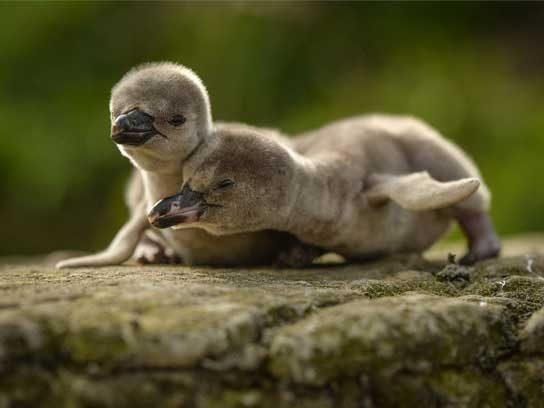
Humboldt penguin chicks
Weighing only two ounces at birth, Panay and his island-named siblings (Papua, Bali, Sumatra, Sumba, Java, and Tuma) hatched in spring 2015 at the Chester Zoo in Cheshire, England. Originating in coastal Peru and Chile, these birds are a threatened species because of the destruction of their natural habitat, guano beds. These regions have centuries’ worth of bird droppings, a fertile ground for the penguins to lay their eggs. Large-scale mining has destroyed their nesting grounds, while overfishing of their prey and rising levels of acidity in the ocean also contribute to their endangerment. When the penguins’ populations began to decline in the mid-1990s, South American countries placed bans on capture and limits on guano mining. While Humboldts still face significant challenges, their numbers are slowly increasing. These innocent looking animals are actually very dangerous.
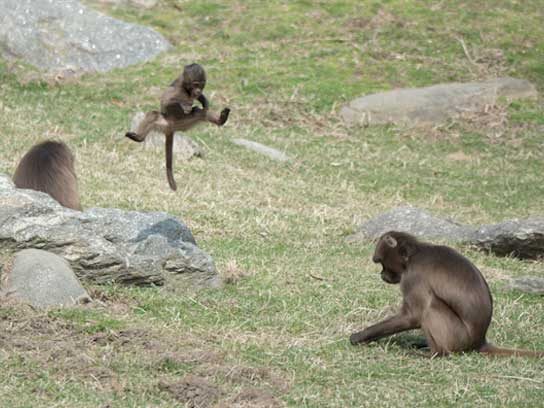
Gelada baboon and his mother, Fayola
Born in the fall of 2015, this gelada baboon lives at the Bronx Zoo in New York City (one of just two zoos home to the species) with his mother, Fayola. Geladas are native to the Ethiopian mountains, where they spend most of their time eating grass (they are the only primate with this diet). With a population in the 100,000 to 200,000 range, the threatened baboons are at less risk than other species thanks to their remote, mountainous habitat. Their primary threat: native people who hunt them for their remarkable manes.
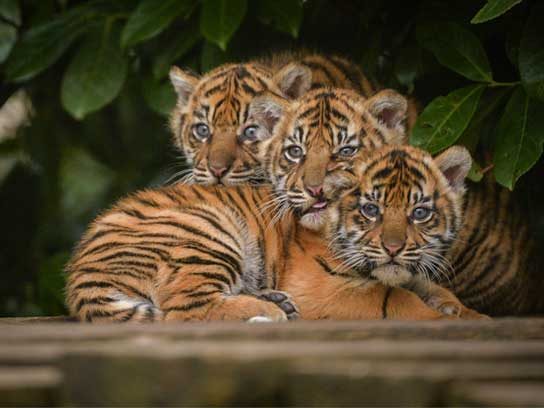
Jaya, Topan, and Kasarna, the Sumatran tigers
The trio of tiger cubs was born on January 2, 2015, at Chester Zoo in England. There are only 300 to 400 left in the wild, which places these felines on the critically endangered list. Most of their natural jungle habitat has been destroyed, and they are common targets for poachers. Found in the forests on the Indonesian island of Sumatra, the tiger is the smallest of big cat species, weighing up to 300 pounds (the Siberian tiger weighs double).
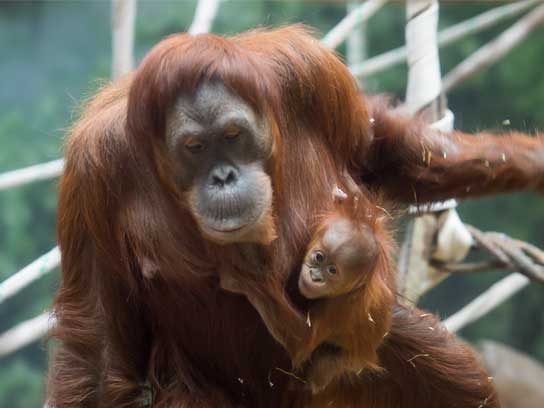
Asmara, the Sumatran orangutan
Asmara was born on November 22, 2014, at the Fort Wayne Children’s Zoo in Indiana. These primates are endangered in the wild, with fewer than 14,000 left. Agricultural development has demolished their natural forest home. They are hunted, mainly to be kept in homes as status symbols. Female orangutans give birth to one baby every eight or nine years, an infrequency that puts them at an even greater risk of extinction. In their native habitat, orangutans live in the trees, almost never touching the ground.

Black rhino
This black rhinoceros was born on April 20, 2015, at the Taronga Western Plains Zoo in New South Wales, Australia. As a baby, Dafari weighed around 90 pounds, while adults could weigh up to 3,000 pounds. Early European settlers in Africa started a tradition of hunting and killing the animals for food and amusement. There are just under 5,000 black rhinos left in the wild, as illegal poaching of the animals for their unique horns continues. But conservationists remain hopeful for the critically endangered species: the World Wide Fund for Nature has created new populations in rhinos’ indigenous habitats, to which 120 rhinos have been relocated.
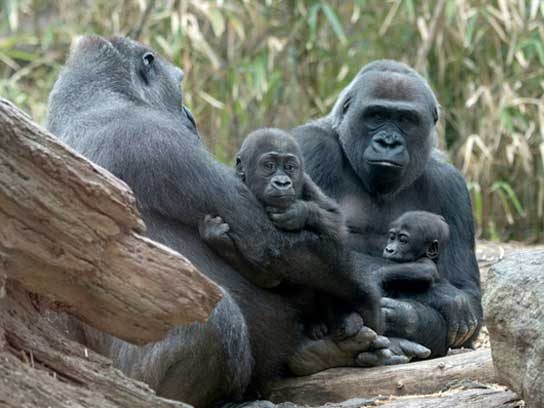
Western Lowland Gorillas
Two Western Lowland gorillas were born in January at the Bronx Zoo in New York City. Weighing between four and five pounds at birth, males can reach six feet tall and 350 to 450 pounds, while females can be four feet tall and 150 to 250 pounds. The species originated throughout Africa, where the population is widespread in rain forests. Its exact population size is unknown, since the gorillas occupy some of the most remote regions. Poaching poses a threat to the critically endangered species, but disease is an even bigger one: Scientists estimate about one-third of the gorilla population succumbed to recent Ebola outbreaks. Here are some of the oldest living animals in the entire world.
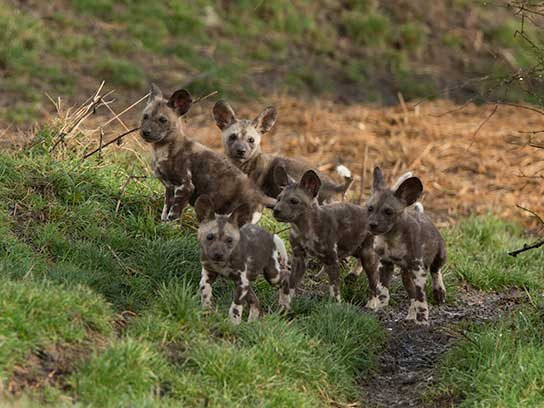
African painted dog pups
Pictured at three months old, these African painted puppies were born at the Port Lympne Reserve in Kent, England. Originally from South Africa, the species are natural hunters and live in packs of 20 – 30 members. Scientists estimate their population size around 3,000 to 5,500. They are targets of human killings, and are susceptible to disease and habitat destruction, placing them on the endangered list. These 50 adorable baby animal photos will brighten your day.
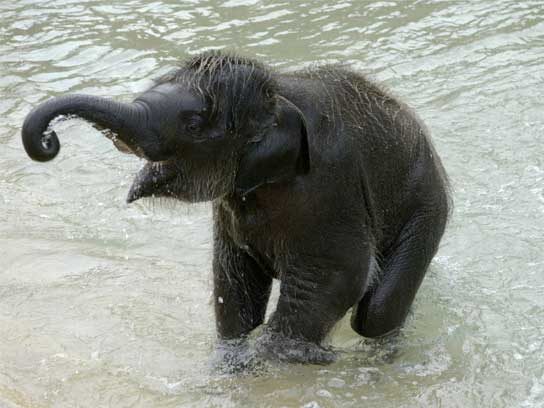
Saving Elephants … and 9 Other Species!
The Association of Zoos and Aquariums (AZA)—an association of 229 such institutions—has just launched a new campaign called SAFE: Saving Animals from Extinction. AZA has already found success in restoring the wild populations of more than 30 species, including the American bison, the California condor, and the black-footed ferret. In 2015, SAFE put extra resources into saving ten key species from the endangered species list: African penguins, Asian elephants (shown here), Black rhinoceros, Cheetahs, Gorillas, Sea Turtles, Sharks and Rays, Vaquitas, Western pond turtles, and Whooping cranes. Every year, ten or more additional species will be targeted. Learn the truth behind 27 popular animal “facts” that just aren’t true.
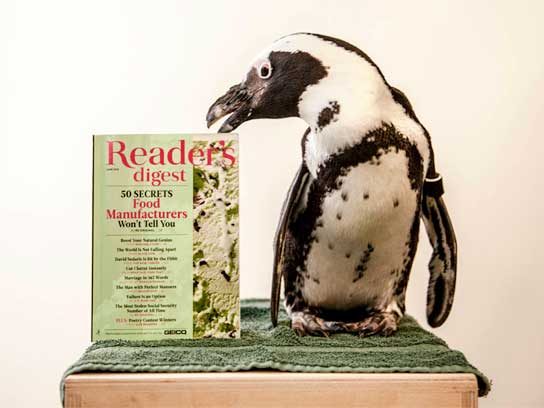
African penguins
The editors at Reader’s Digest were lucky to have a visit from Winnie and Lilly, two young African penguins from the Maryland Zoo in Baltimore. That zoo—which runs a successful breeding program for the endangered waterfowl—has around 60 of the birds on exhibit, and Winnie (seen here) and Lilly serve as two of their group’s ambassadors. Between 1956 and 2009, the wild population of African penguins plunged 60.5 percent, and today roughly 25,000 pairs exist in Africa. Guano collection and egg collection have greatly decreased their numbers, as have oil spills. To find out more about the efforts to preserve their species, go to aza.org/SAFE, and make sure you know these 13 incredible facts about penguins.